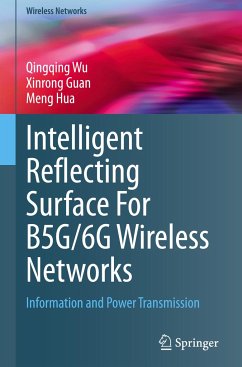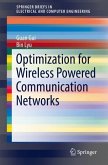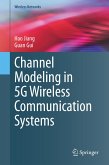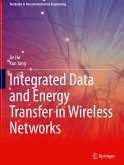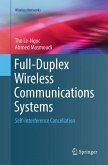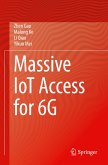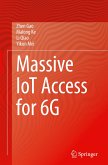This book provides comprehensive insights into the theory, models, and unique characteristics of intelligent reflecting surface (IRS) and its appealing applications in wireless information and power transmission for B5G/6G. It is organized as follows:
Chapter 1 gives an overview of the fundamentals of IRS, including the signal and channel models of IRS, its hardware architecture, advantages and practical constraints. Chapter 2, 3 and 4 focus on how to optimize the joint design of active and passive beamforming for three types of IRS-aided wireless information/energy transmission systems, namely IRS-aided power transfer (WPT), IRS-aided simultaneous wireless information and power transfer (SWIPT) and IRS-aided wireless powered communication networks (WPCN).
Chapter 2 specifically presents a general framework design for IRS-aided WPT systems from the perspectives of energy beamforming design and channel estimation, while the dynamic IRS beamforming design is also discussed.
Chapter 3 thoroughly studies the IRS-aided SWIPT for achieving better R-E trade-off, wherein two different designs based on weighted sum-power maximization at energy users (EUs) and under individual quality-of-service (QoS), requirements at both information users (IUs) and EUs are investigated.
Chapter 4 presents three paradigms of IRS-aided WPCN, i.e., IRS-aided half-duplex (HD) WPCN, IRS-aided full-duplex (FD) WCPN and IRS-aided multiple-input-multiple-output (MIMO) FD WPCN. The authors present some related emerging topics, e.g., active IRS aided wireless communications and IRS-aided unmanned aerial vehicle (UAV) communications in chapter 5.
This book targets postgraduate students studying electrical engineering and computer science, and can be used as a secondary textbook. Professionals, researchers and engineers working in wireless networks will also find this book useful as a reference.
Chapter 1 gives an overview of the fundamentals of IRS, including the signal and channel models of IRS, its hardware architecture, advantages and practical constraints. Chapter 2, 3 and 4 focus on how to optimize the joint design of active and passive beamforming for three types of IRS-aided wireless information/energy transmission systems, namely IRS-aided power transfer (WPT), IRS-aided simultaneous wireless information and power transfer (SWIPT) and IRS-aided wireless powered communication networks (WPCN).
Chapter 2 specifically presents a general framework design for IRS-aided WPT systems from the perspectives of energy beamforming design and channel estimation, while the dynamic IRS beamforming design is also discussed.
Chapter 3 thoroughly studies the IRS-aided SWIPT for achieving better R-E trade-off, wherein two different designs based on weighted sum-power maximization at energy users (EUs) and under individual quality-of-service (QoS), requirements at both information users (IUs) and EUs are investigated.
Chapter 4 presents three paradigms of IRS-aided WPCN, i.e., IRS-aided half-duplex (HD) WPCN, IRS-aided full-duplex (FD) WCPN and IRS-aided multiple-input-multiple-output (MIMO) FD WPCN. The authors present some related emerging topics, e.g., active IRS aided wireless communications and IRS-aided unmanned aerial vehicle (UAV) communications in chapter 5.
This book targets postgraduate students studying electrical engineering and computer science, and can be used as a secondary textbook. Professionals, researchers and engineers working in wireless networks will also find this book useful as a reference.

